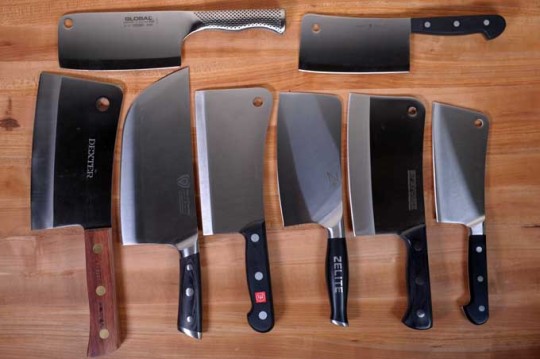#CleaverClarity
Explore tagged Tumblr posts
Text
Culinary Confidence with a Cleaver Knife: Master the Basics
When it comes to mastering the art of cooking, confidence in the kitchen is your secret ingredient. And one tool that can boost your culinary confidence to new heights is the versatile cleaver knife. In this guide, we're going to explore the basics of using a cleaver knife, from its history and anatomy to essential techniques, all designed to help you become a master in the kitchen.

The Cleaver Knife's Rich History
Before we dive into the kitchen, let's take a step back in time to appreciate the history of the cleaver knife. This culinary workhorse has a rich and storied past, with its origins tracing back to ancient China. Originally, cleaver knives were created to serve as multi-purpose tools, capable of handling a wide range of kitchen tasks. Today, they've evolved into a must-have for cooks worldwide.
Understanding the Anatomy of a Cleaver Knife
To become a master of the cleaver knife, you first need to understand its components:
The Blade: The cleaver's blade is its heart and soul. It's typically broad and rectangular, making it ideal for chopping, dicing, and smashing. Cleaver knife blades can be crafted from stainless steel or carbon steel, each with its unique advantages.
The Handle: The handle provides you with the grip and control you need while working your culinary magic. Cleaver knife handles are commonly made from materials like wood, plastic, or stainless steel, ensuring a comfortable hold.
Weight Matters: Cleaver knives come in various weights, from heavy to light. The knife's weight affects its functionality. Heavier cleavers excel at cutting through bones and tough materials, while lighter ones are better suited for precision work.
Types of Cleaver Knives
Cleaver knives come in several specialized types, each tailored to specific kitchen tasks:
Chinese Cleaver: This is the classic cleaver knife and is incredibly versatile, capable of handling various tasks in the kitchen. It's a staple in Chinese cuisine.
Meat Cleaver: For those who love working with meat, the meat cleaver is your best friend. It's designed for cutting through meat and bones with ease.
Vegetable Cleaver: With a thinner blade compared to the meat cleaver, the vegetable cleaver is perfect for slicing and dicing vegetables with precision.
Bone Cleaver: When you need to tackle tough tasks, the bone cleaver is your go-to tool. It's built for chopping through bones and other dense materials.
Mastering Cleaver Knife Basics
Now, let's explore the essential techniques to master the basics of using a cleaver knife:
The Rock Chop: Rest the blade on the cutting board and use a rocking motion to create smooth, controlled chops. This technique is perfect for chopping vegetables, herbs, and more.
The Guiding Claw: When using a cleaver knife, always keep your non-dominant hand in a "claw" shape to guide the food you're chopping. This helps ensure both safety and precision.
The Precision Slice: For precise cuts, use the front part of the blade and let the knife's weight do the work. This technique is ideal for fine slicing.
The Scoop: The flat side of the cleaver's blade is excellent for scooping up ingredients and transferring them to your pan or pot, making your cooking process more efficient.
Caring for Your Cleaver Knife
To maintain your culinary confidence with a cleaver knife, proper care is essential:
Hand Washing: Always wash your cleaver knife by hand with mild soap and warm water. Avoid the dishwasher, as it can damage the blade and handle.
Drying and Storage: After washing, ensure your knife is thoroughly dried, especially the blade to prevent rust. Store it safely in a knife block or on a magnetic strip to keep the blade sharp and your fingers safe.
Regular Sharpening: To maintain a sharp edge, invest in a quality knife sharpener or visit a professional for sharpening as needed.
Conclusion: Unleash Your Culinary Confidence
In the world of cooking, confidence is the secret sauce that elevates your dishes from good to extraordinary. Mastering the basics of the cleaver knife is a step toward culinary self-assurance. With the right techniques and care, you can make the most of this versatile kitchen tool. So, grab your cleaver, sharpen it up, and embark on your culinary journey with newfound confidence. Your kitchen adventures await!
#louismartinknives#customknives#cleaverknife#bestcleaverknife#meatcleaverknif#CleaverClarity#SliceAndDice#CleaverCorner#TechniqueTalk#BladeBasics#CleaverCompleteGuide#TypesAndTechniques
7 notes
·
View notes